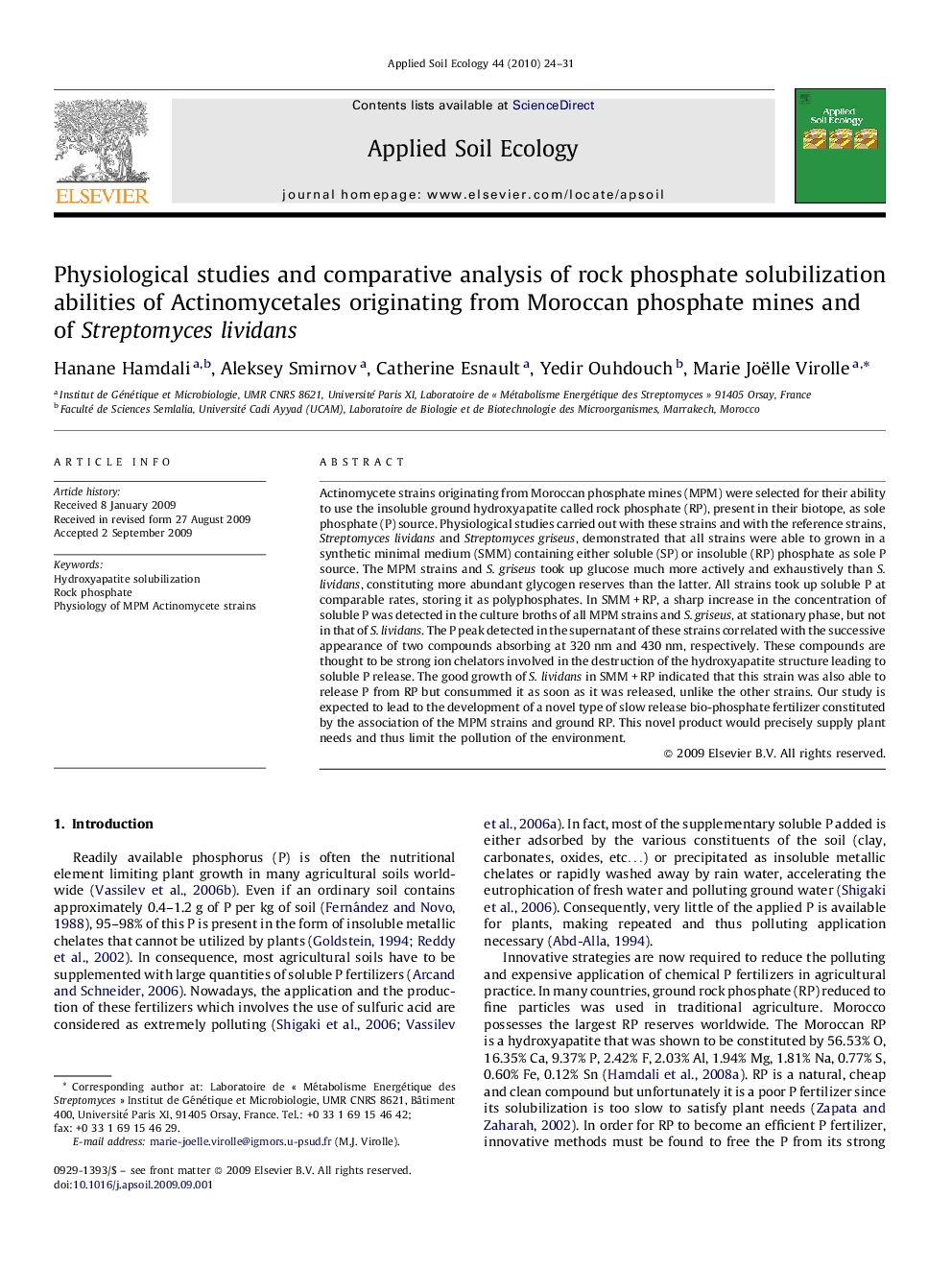| Article ID | Journal | Published Year | Pages | File Type |
|---|---|---|---|---|
| 4383031 | Applied Soil Ecology | 2010 | 8 Pages |
Actinomycete strains originating from Moroccan phosphate mines (MPM) were selected for their ability to use the insoluble ground hydroxyapatite called rock phosphate (RP), present in their biotope, as sole phosphate (P) source. Physiological studies carried out with these strains and with the reference strains, Streptomyces lividans and Streptomyces griseus, demonstrated that all strains were able to grown in a synthetic minimal medium (SMM) containing either soluble (SP) or insoluble (RP) phosphate as sole P source. The MPM strains and S. griseus took up glucose much more actively and exhaustively than S. lividans, constituting more abundant glycogen reserves than the latter. All strains took up soluble P at comparable rates, storing it as polyphosphates. In SMM + RP, a sharp increase in the concentration of soluble P was detected in the culture broths of all MPM strains and S. griseus, at stationary phase, but not in that of S. lividans. The P peak detected in the supernatant of these strains correlated with the successive appearance of two compounds absorbing at 320 nm and 430 nm, respectively. These compounds are thought to be strong ion chelators involved in the destruction of the hydroxyapatite structure leading to soluble P release. The good growth of S. lividans in SMM + RP indicated that this strain was also able to release P from RP but consummed it as soon as it was released, unlike the other strains. Our study is expected to lead to the development of a novel type of slow release bio-phosphate fertilizer constituted by the association of the MPM strains and ground RP. This novel product would precisely supply plant needs and thus limit the pollution of the environment.
